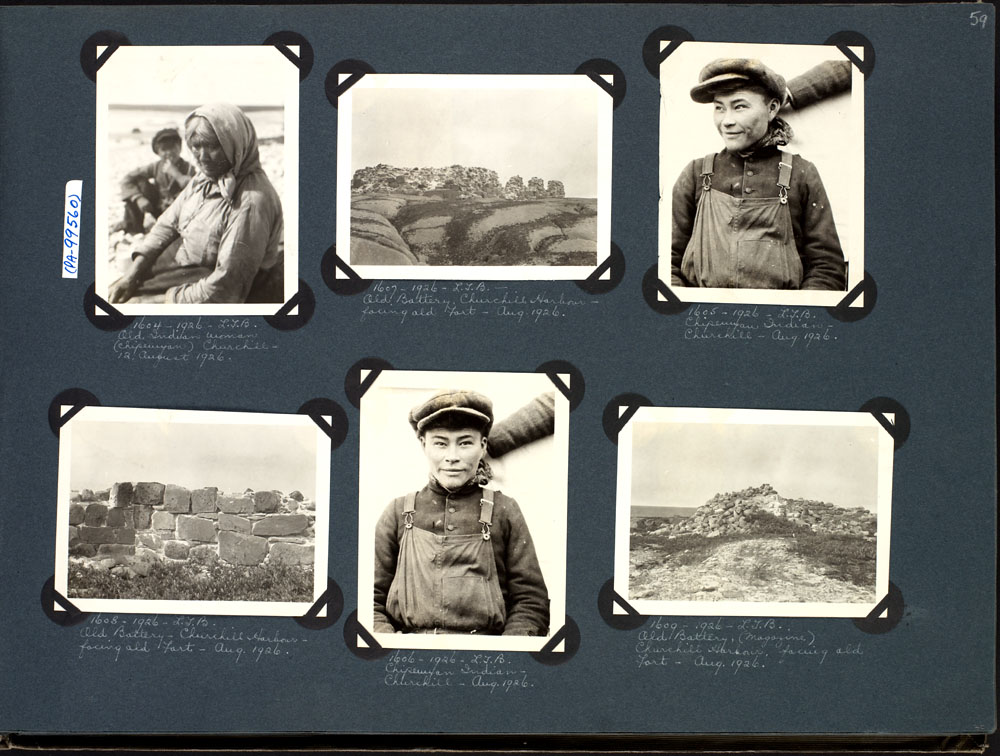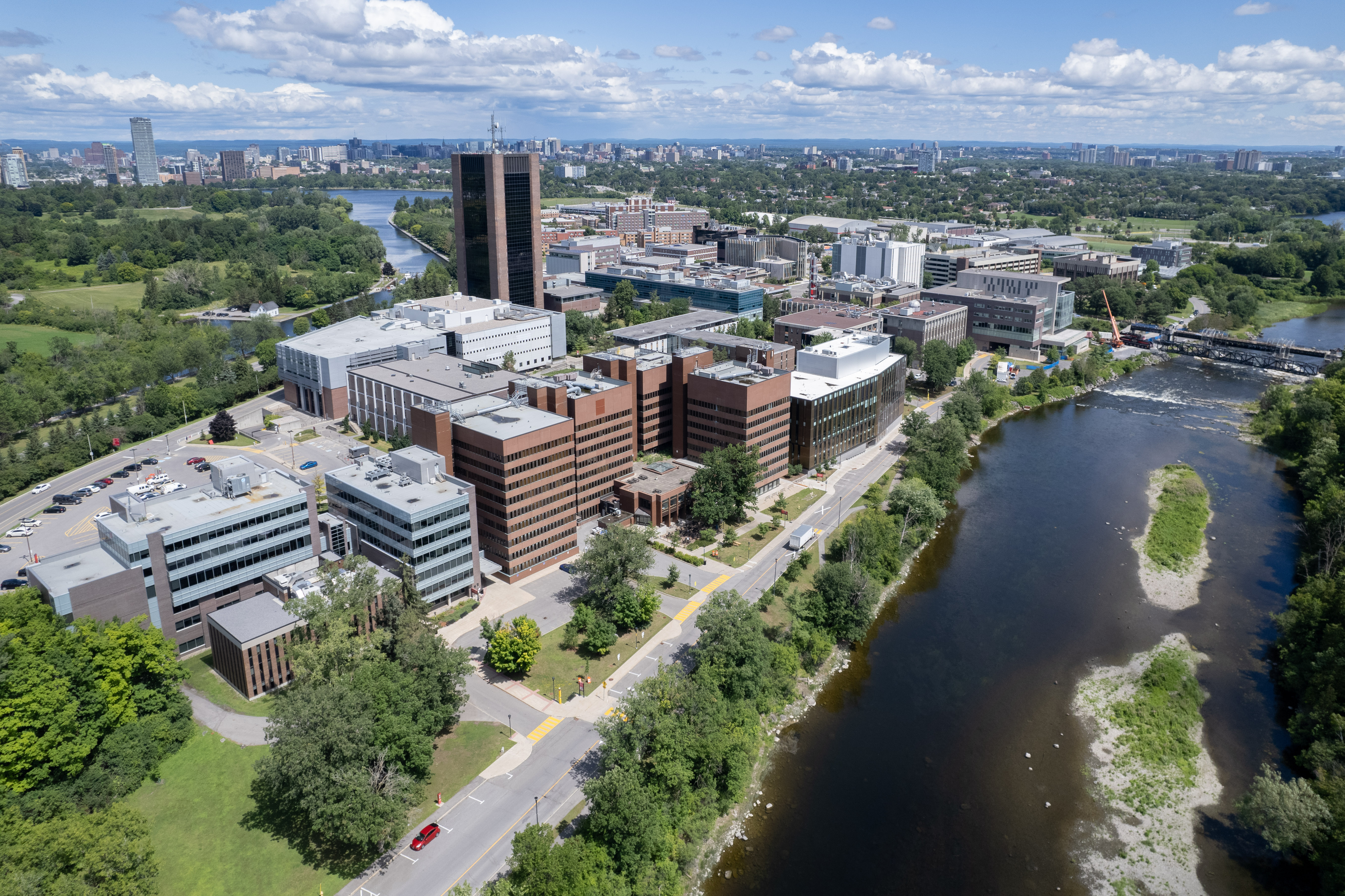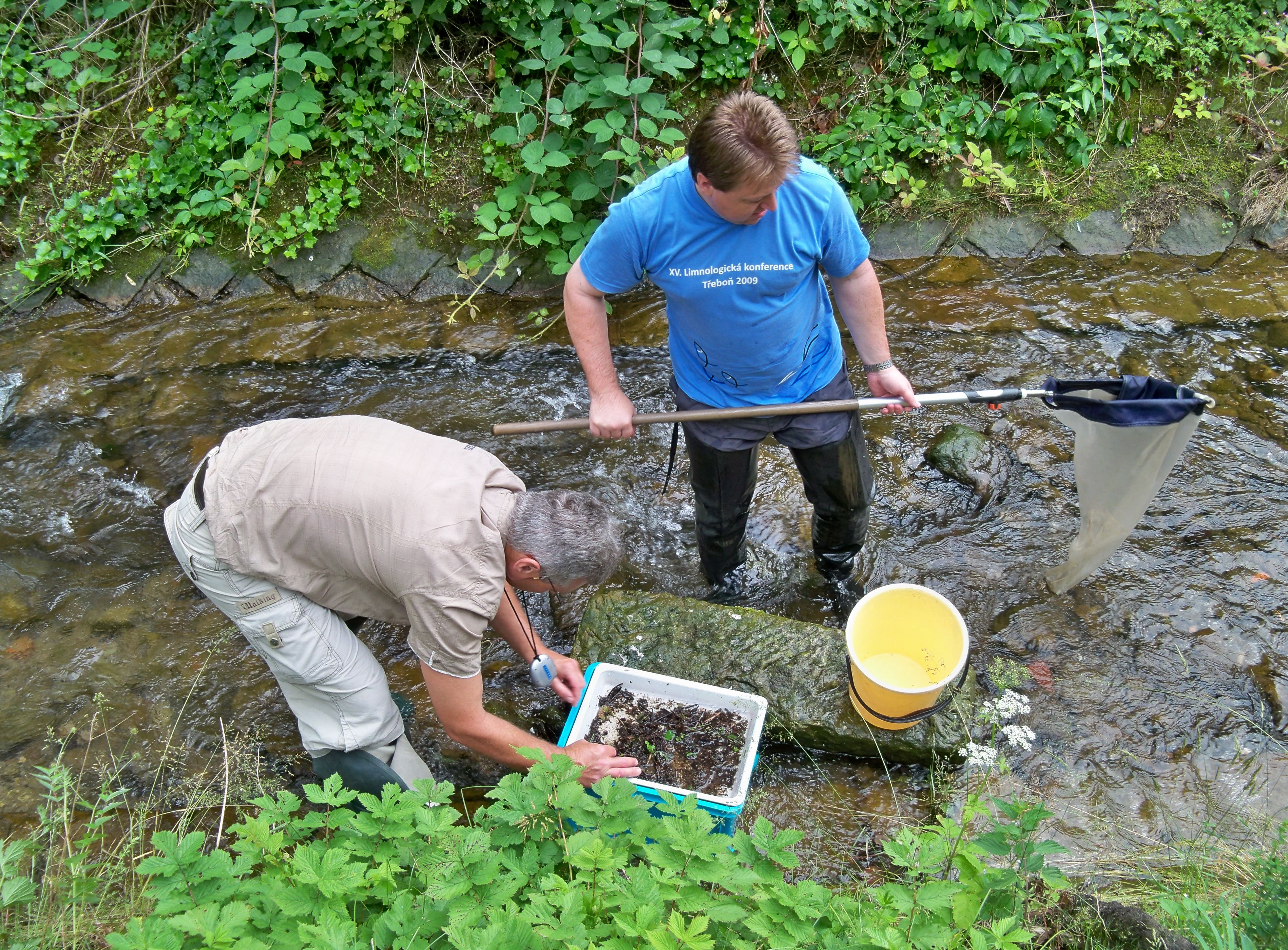|
June Helm
June Helm (September 13, 1924 – February 5, 2004) was an American anthropologist, primarily known for her work with the Dene people in the Mackenzie River drainage. Early life and education Helm was born in Twin Falls, Idaho in 1924, to William Jennings Helm and Julia Frances (née Dixon) Helm. In 1930, the family moved to Kansas City, Kansas. Helm experienced a solitary childhood, full of illness, and was a shy, anxious child. After high school, Helm enrolled in anthropology at the University of Kansas, because of its modest tuition, and there she completed a year of education. In 1942, her father's machinery repair business experienced a boom, leading to the finances necessary for Helm to transfer to the University of Chicago, her school of choice. Helm graduated with a Bachelor of Philosophy from the University of Chicago in 1944, after completing the two-year program. Helm received her M.A. in 1949. She received encouragement from Robert Redfield and George Peter Murdock, ... [...More Info...] [...Related Items...] OR: [Wikipedia] [Google] [Baidu] |
Twin Falls, Idaho
Twin Falls is the county seat and largest city of Twin Falls County, Idaho, United States. The city had a population of 51,807 as of the 2020 census. In the Magic Valley region, Twin Falls is the largest city in a radius, and is the regional commercial center for south-central Idaho and northeastern It is the principal city of the Twin Falls Metropolitan Statistical Area, which officially includes the entirety of Twin Falls and Jerome The border town resort community of Jackpot, Nevada, south at the state line, is unofficially considered part of the greater Located on a broad plain at the south rim of the Snake River Canyon, Twin Falls is where daredevil Evel Knievel attempted to jump across the canyon in 1974 on a steam-powered rocket. The jump site is northeast of central Twin Falls, midway between Shoshone Falls and the Perrine Bridge. History Excavations at Wilson Butte Cave near Twin Falls in 1959 revealed evidence of human activity, including arrowheads, that ra ... [...More Info...] [...Related Items...] OR: [Wikipedia] [Google] [Baidu] |
Ottawa
Ottawa (, ; Canadian French: ) is the capital city of Canada. It is located at the confluence of the Ottawa River and the Rideau River in the southern portion of the province of Ontario. Ottawa borders Gatineau, Quebec, and forms the core of the Ottawa–Gatineau census metropolitan area (CMA) and the National Capital Region (NCR). Ottawa had a city population of 1,017,449 and a metropolitan population of 1,488,307, making it the fourth-largest city and fourth-largest metropolitan area in Canada. Ottawa is the political centre of Canada and headquarters to the federal government. The city houses numerous foreign embassies, key buildings, organizations, and institutions of Canada's government, including the Parliament of Canada, the Supreme Court, the residence of Canada's viceroy, and Office of the Prime Minister. Founded in 1826 as Bytown, and incorporated as Ottawa in 1855, its original boundaries were expanded through numerous annexations and were ultimately ... [...More Info...] [...Related Items...] OR: [Wikipedia] [Google] [Baidu] |
Nancy Oestreich Lurie
Nancy Oestreich Lurie (January 29, 1924May 13, 2017) was an American anthropologist who specialized in the study of North American Indian history and culture. Lurie's research specialties were ethnohistory, action anthropology and museology; her areal focus was on North American Indians, especially the Ho-Chunk (aka Winnebago) and the Dogrib ( Tlicho) of the Canadian NWT; and the comparative study of territorial minorities. During the mid-20th century, she represented several tribes as an expert witness at a time of Native American activism when tribes were pressing to make claims for compensation of lands they were forced to cede and for which they did not receive adequate payment. Her experience with ethnohistory enabled her to research documentation that helped represent their claims. Early life and education Nancy Oestreich was born on January 29, 1924, in Milwaukee, Wisconsin. After attending local schools, she received her B. A. from the University of Wisconsin–Madison (19 ... [...More Info...] [...Related Items...] OR: [Wikipedia] [Google] [Baidu] |
Leslie Spier
Leslie Spier (December 13, 1893 – December 3, 1961) was an American anthropologist best known for his ethnographic studies of American Indians. He spent a great deal of his professional life as a teacher; he retired in 1955 and died in 1961.Robert F. Spencer, "Leslie Spier December 13, 1893-December 3, 1961." National Academy of Sciences, 1987, Washington D.C. Spier created a path for the study of cultural change, taking the time to conduct in-depth studies of group contact. His studies focused on changes throughout various cultures over time; he saw great importance in empirical research and made his reports as detailed as possible. Spier’s early years were spent studying the many diverse areas of anthropology ranging from archaeology to physical anthropology. His main interests were studying human relations and analyzing cultural processes among Native American groups. As a teacher, Spier was greatly admired by his students because he was extremely successful in passing alo ... [...More Info...] [...Related Items...] OR: [Wikipedia] [Google] [Baidu] |
Julian Steward
Julian Haynes Steward (January 31, 1902 – February 6, 1972) was an American anthropologist known best for his role in developing "the concept and method" of cultural ecology, as well as a scientific theory of culture change. Early life and education Steward was born in Washington, D.C., where he lived on Monroe Street, NW, and later, Macomb Street in Cleveland Park. At age 16, Steward left an unhappy childhood in Washington, D.C. to attend boarding school in Deep Springs Valley, California, in the Great Basin. Steward's experience at the newly established Deep Springs Preparatory School (which later became Deep Springs College), high in the White Mountains had a significant influence on his academic and career interests. Steward’s “direct engagement” with the land (specifically, subsistence through irrigation and ranching) and the Northern Paiute Amerindians that lived there became a “catalyst” for his theory and method of cultural ecology. (Kerns 1999; Murphy 1977) ... [...More Info...] [...Related Items...] OR: [Wikipedia] [Google] [Baidu] |
Athabaskan Languages
Athabaskan (also spelled ''Athabascan'', ''Athapaskan'' or ''Athapascan'', and also known as Dene) is a large family of indigenous languages of North America, located in western North America in three areal language groups: Northern, Pacific Coast and Southern (or Apachean). Kari and Potter (2010:10) place the total territory of the 53 Athabaskan languages at . Chipewyan is spoken over the largest area of any North American native language, while Navajo is spoken by the largest number of people of any native language north of Mexico. ''Athebaskan '' is a version of a Cree name for Lake Athabasca ( crm, Āðapāskāw, script=Latn 'herethere are reeds one after another'), in Canada. Cree is one of the Algonquian languages and therefore not itself an Athabaskan language. The name was assigned by Albert Gallatin in his 1836 (written 1826) classification of the languages of North America. He acknowledged that it was his choice to use that name for the language family and its asso ... [...More Info...] [...Related Items...] OR: [Wikipedia] [Google] [Baidu] |
Slavey People
The Slavey (also Slave and South Slavey) are a First Nations indigenous peoples of the Dene group, indigenous to the Great Slave Lake region, in Canada's Northwest Territories, and extending into northeastern British Columbia and northwestern Alberta. Name Cree exonym "slave" ''Slavey'' or just ''Slave'' is a translation of the name given to ''Dene'' by the Cree "who sometimes raided and enslaved their less aggressive northern neighbors". The names of the Slave River, Lesser Slave River, Great Slave Lake, and Lesser Slave Lake all derive from this Cree name. ''Esclaves'' remains incorporated in the French names of these geographical features, since the French traded with the Cree before the English did. The people now called ''Slavey'' in English were not necessarily taken as slaves in that period. Dehcho autonym The name Slavey is seldom used by the people themselves, who call themselves ''Dene.'' Indigenous ethnonyms for South Slavey people and language are Dehcho, Deh Cho D ... [...More Info...] [...Related Items...] OR: [Wikipedia] [Google] [Baidu] |
Chipewyan People
The Chipewyan ( , also called ''Denésoliné'' or ''Dënesųłı̨né'' or ''Dënë Sųłınë́'', meaning "the original/real people") are a Dene Indigenous peoples in Canada, Indigenous Canadian people of the Athabaskan languages, Athabaskan language family, whose ancestors are identified with the Taltheilei Shale tradition, Taltheilei Shale archaeological tradition. They are part of the Northern Athabaskan languages, Northern Athabascan group of peoples, and come from what is now Western Canada. Terminology The term ''Chipewyan'' (ᒌᐘᔮᐣ) is a Cree Endonym and exonym, exonym meaning ''pointed hides'', referring to the design of their parkas. The French-speaking missionaries to the northwest of the Red River Colony referred to the Chipewyan people as Montagnais in their documents written in French. Montagnais simply means "mountain people" or "highlanders" in French and has been applied to many unrelated nations across North America over time. For example the Innu ... [...More Info...] [...Related Items...] OR: [Wikipedia] [Google] [Baidu] |
Carlton University
Carleton University is an English-language public research university in Ottawa, Ontario, Canada. Founded in 1942 as Carleton College, the institution originally operated as a private, non-denominational evening college to serve returning World War II veterans. Carleton was chartered as a university by the provincial government in 1952 through ''The Carleton University Act,'' which was then amended in 1957, giving the institution its current name. The university is named for the now-dissolved Carleton County, which included the city of Ottawa at the time the university was founded. Carleton County, in turn, was named in honour of Guy Carleton, 1st Baron Dorchester, who was Governor General of The Canadas from 1786 to 1796. The university moved to its current campus in 1959, growing rapidly in size during the 1960s as the Ontario government increased support for post-secondary institutions and expanded access to higher education. Carleton offers a diverse range of academic program ... [...More Info...] [...Related Items...] OR: [Wikipedia] [Google] [Baidu] |
Ethnography
Ethnography (from Greek ''ethnos'' "folk, people, nation" and ''grapho'' "I write") is a branch of anthropology and the systematic study of individual cultures. Ethnography explores cultural phenomena from the point of view of the subject of the study. Ethnography is also a type of social research that involves examining the behavior of the participants in a given social situation and understanding the group members' own interpretation of such behavior. Ethnography in simple terms is a type of qualitative research where a person puts themselves in a specific community or organization in attempt to learn about their cultures from a first person point-of-view. As a form of inquiry, ethnography relies heavily on participant observation—on the researcher participating in the setting or with the people being studied, at least in some marginal role, and seeking to document, in detail, patterns of social interaction and the perspectives of participants, and to understand these i ... [...More Info...] [...Related Items...] OR: [Wikipedia] [Google] [Baidu] |
Field Research
Field research, field studies, or fieldwork is the collection of raw data outside a laboratory, library, or workplace setting. The approaches and methods used in field research vary across disciplines. For example, biologists who conduct field research may simply observe animals interacting with their environments, whereas social scientists conducting field research may interview or observe people in their natural environments to learn their languages, folklore, and social structures. Field research involves a range of well-defined, although variable, methods: informal interviews, direct observation, participation in the life of the group, collective discussions, analyses of personal documents produced within the group, self-analysis, results from activities undertaken off- or on-line, and life-histories. Although the method generally is characterized as qualitative research, it may (and often does) include quantitative dimensions. History Field research has a long history. ... [...More Info...] [...Related Items...] OR: [Wikipedia] [Google] [Baidu] |
Mexico
Mexico (Spanish: México), officially the United Mexican States, is a country in the southern portion of North America. It is bordered to the north by the United States; to the south and west by the Pacific Ocean; to the southeast by Guatemala, Belize, and the Caribbean Sea; and to the east by the Gulf of Mexico. Mexico covers ,Mexico ''''. . making it the world's 13th-largest country by are ... [...More Info...] [...Related Items...] OR: [Wikipedia] [Google] [Baidu] |




